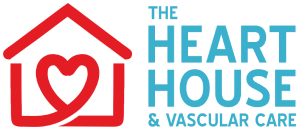Restless Leg Syndrome
What is Restless Leg Syndrome?
Restless leg syndrome (RLS) is characterized by throbbing, crawling, tingling, or other odd sensations deep in the legs, along with an intense need to move them for relief. Symptoms are most pronounced at rest, especially when lying down at night, and temporarily improve with movement.
RLS can make it very difficult to fall asleep and often causes difficulty staying asleep throughout the night as well. The resulting daytime exhaustion can greatly disrupt work and activities.
Possible Vascular Factors in Restless Leg Syndrome
While we still have more to learn, research suggests vascular mechanisms may play a significant role in restless leg syndrome (RLS) for many patients. For instance, there is some evidence that restless leg syndrome (RLS) and peripheral vascular disease (PVD) may be linked. In one study, people with RLS were more likely to have PVD than people without RLS. The study also found that people with RLS who had PVD were more likely to have severe RLS symptoms.
It is not clear why RLS and PVD might be linked. One possibility is that both conditions are caused by damage to the nerves that control blood flow to the legs. Another possibility is that both conditions are caused by inflammation. Some other possible vascular factors linked to RLS include:
- Reduced blood flow to the legs
Studies reveal decreased leg circulation in RLS patients, especially at night when symptoms worsen. This impaired flow may spark the unpleasant leg sensations. - Blood vessel damage
Conditions like diabetes, kidney disease, and peripheral artery disease that damage vessels are associated with higher RLS risk. This vessel damage likely contributes by reducing leg blood supply. - Endothelial dysfunction
Dysfunctional endothelium, the cells lining blood vessels, is tied to RLS. Endothelial impairment is known to hinder proper blood flow and may similarly affect leg circulation. - Anemia
Low iron and red blood cell levels may diminish oxygen delivery to the legs in some RLS patients. - Pregnancy
Fluid retention and relative anemia of pregnancy can potentially affect circulation and lead to RLS symptoms.
Peripheral Vascular Symptoms Associated with Restless Leg Syndrome
It is important to note that not all people with RLS will experience peripheral vascular symptoms. However, if you have RLS and you are also experiencing any of the above symptoms, it is important to talk to your doctor. They can help you determine if there is a vascular component to your RLS and recommend appropriate treatment.
In addition to the signature creeping, crawling, tingling sensations and urge to move the legs, restless leg syndrome often co-occurs with other peripheral vascular symptoms, including:
- Nighttime leg cramps
Nighttime leg cramps are involuntary muscle contractions that can be extremely painful. They are often caused by poor circulation, but they can also be caused by other factors, such as dehydration, electrolyte imbalance, or medication side effects. - Cold legs and feet
Cold legs and feet are another common symptom of poor circulation. This is because the blood vessels in the extremities constrict when they are cold, which reduces blood flow. - Numbness and tingling
Numbness and tingling in the legs can be caused by a variety of factors, including poor circulation, nerve damage, and vitamin deficiency. In the context of RLS, it is thought to be caused by a combination of poor circulation and nerve damage. - Discoloration of legs
The skin on the legs can become discolored in people with poor circulation. This is because the blood vessels in the skin are not getting enough oxygen, which can cause the skin to turn red, blue, or purple. - Leg heaviness and fatigue
Leg heaviness and fatigue are also common symptoms of poor circulation. This is because the muscles in the legs are not getting enough oxygen and nutrients. - Leg swelling
Leg swelling is another symptom of poor circulation. This is because fluid builds up in the tissues when the blood vessels are not able to return it to the heart effectively. - Varicose veins
Varicose veins are enlarged, twisted veins that can occur in the legs. They are caused by weakened valves in the veins that allow blood to flow backward. - Leg ulcers
Leg ulcers are open sores that can occur on the legs. They are often caused by poor circulation and can be difficult to heal. - Intermittent claudication
Intermittent claudication is pain in the legs that occurs with walking. It is caused by narrowing of the arteries in the legs, which reduces blood flow.
Treatments for Restless Leg Syndrome
While there is no cure for restless legs syndrome (RLS), a number of treatment options can provide symptom relief and control. The optimal treatments for an individual patient depend on the severity of RLS and any identified contributing factors.
If peripheral vascular dysfunction is found to be a contributing mechanism to restless leg syndrome (RLS), additional therapies may include medications to improve circulation, compression stockings to aid venous and lymphatic flow, lower extremity exercises to boost circulation, treatment of conditions like diabetes and peripheral artery disease (PAD) that impair blood flow; and massage, heat, ice, or topicals to soothe muscles and nerves.
Medical treatments for RLS include iron repletion, gabapentinoids, and, at times, dopaminergic medications, and medical devices that gently vibrate or compress the legs to provide sensory relief and reduce the urge to move the legs. Lifestyle changes that can help to manage RLS symptoms include:
- Getting regular exercise
Exercise can help to improve circulation and reduce stress, both of which can contribute to RLS symptoms. However, it is important to avoid exercising too close to bedtime, as this can make RLS symptoms worse. - Avoiding caffeine and alcohol before bed
Caffeine and alcohol are both stimulants that can interfere with sleep. Caffeine can also worsen RLS symptoms. It is best to avoid caffeine and alcohol at least 4-6 hours before bedtime. - Creating a relaxing bedtime routine
A relaxing bedtime routine can help to prepare your body and mind for sleep. This might include taking a warm bath, reading a book, or listening to calming music. Avoid watching TV or using electronic devices in the hour before bed, as the blue light emitted from these devices can interfere with sleep. - Maintaining a regular sleep schedule
Going to bed and waking up at the same time each day, even on weekends, can help regulate your body's natural sleep-wake cycle. This can help to prevent RLS symptoms from occurring. - Avoiding napping during the day
Napping during the day can make it harder to fall asleep at night. If you must nap, try to keep it short (30 minutes or less) and avoid napping in the late afternoon or evening. - Stretching and massaging the legs
Stretching and massaging the legs can help to relieve muscle tension and discomfort, which can contribute to RLS symptoms. You can try stretching your legs before bed or using a massage device on your legs.
Photo Gallery
Video Gallery
Testimonials
Photo Gallery
Meet Your Cardiovascular Specialists
In Search of Care? Request a Consultation Today


 Fax: 856-547-5337
Fax: 856-547-5337
